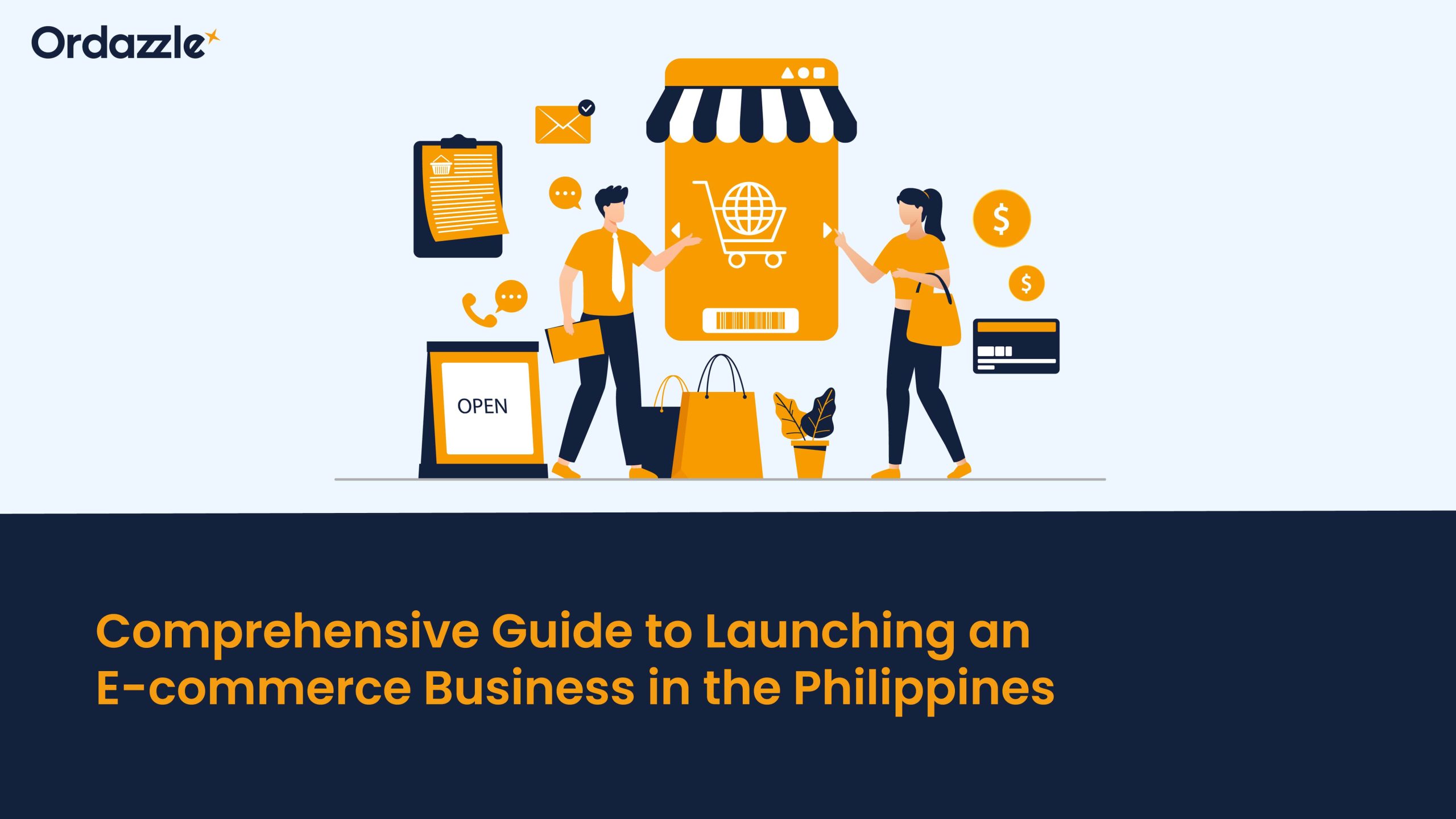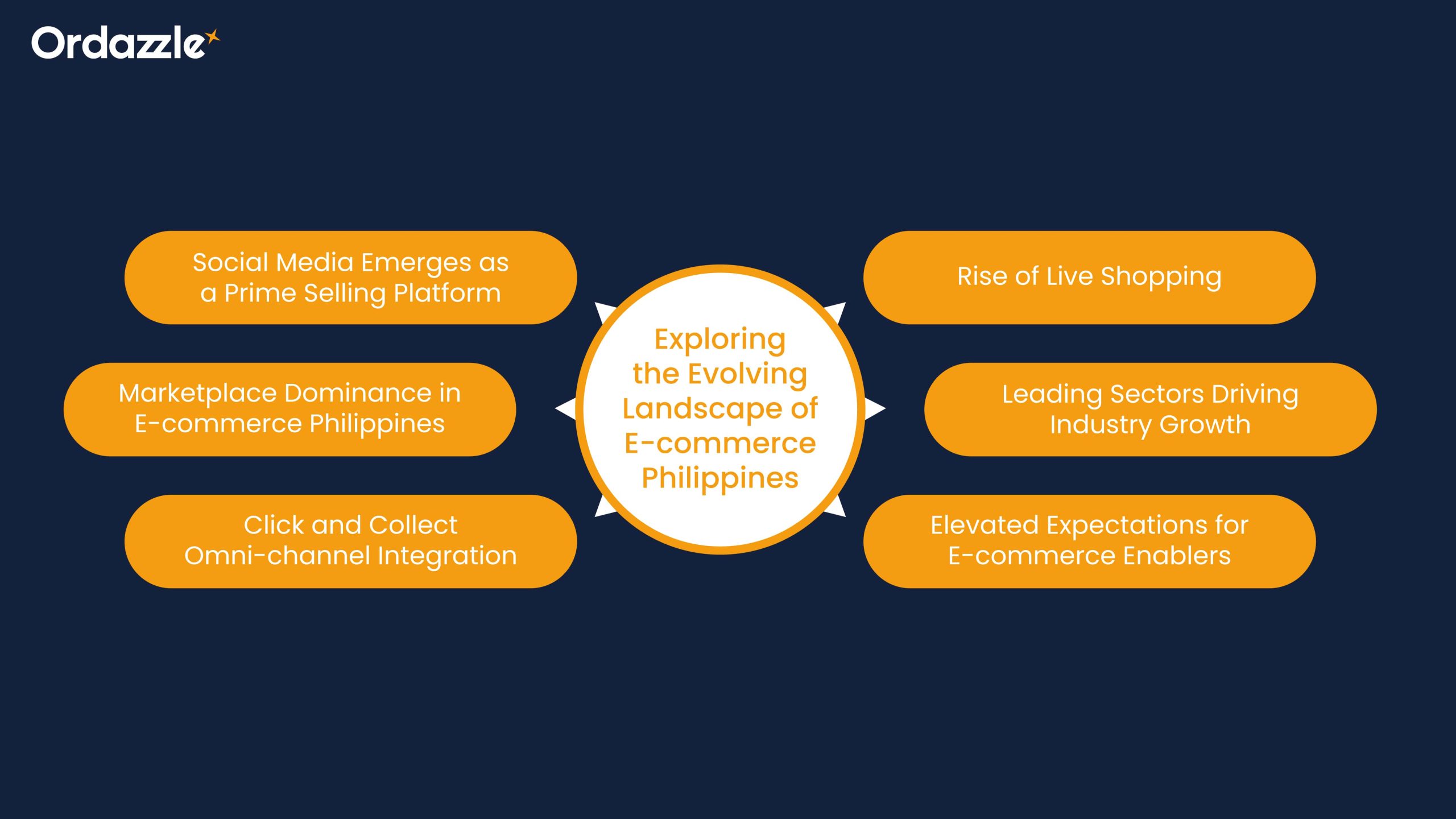
Comprehensive Guide to Launching an e-Commerce Business in the Philippines
Embarking on the journey of starting an e-Commerce business is a dream shared by many, yet the path to success can seem daunting, especially if it’s in the burgeoning market of e-Commerce Philippines.
In recent years, the e-Commerce sector in the Philippines has experienced exponential growth, with revenue expected to reach a staggering US$15.78 billion in 2024 and culminating in a projected market volume of US$22.94 billion by 2028.
Navigating e-Commerce complexities in a rapidly evolving and fragmented country requires strategic insight. In this guide, we’ll explore launching an e-Commerce venture in the Philippines, empowering you to embark on this journey confidently.
Exploring the Evolving Landscape of e-Commerce Philippines

1. Social Media Emerges as a Prime Selling Platform
Social media platforms such as Facebook, YouTube, TikTok, and Instagram, have become a pivotal hub for online shopping, enabling e-Commerce businesses to reach a broad audience, enhance brand visibility, and drive sales.
2. Marketplace Dominance in e-Commerce Philippines
Online marketplaces remain dominant in Philippine e-Commerce, pushing brands to establish a robust presence across multiple channels to cater to diverse consumer preferences. Investing in unified sales channels is essential for delivering a seamless omnichannel experience.
3. Click and Collect Omni-channel Integration
Omni channel management strategies, blending online and offline shopping, are rising in popularity in the Philippines. Retailers now offer click-and-collect options, letting customers purchase online and pick up in-store. This seamless integration boosts convenience for shoppers and opens new avenues for engagement and sales for retailers.
4. Rise of Live Shopping
Live shopping is surging in popularity among Filipino consumers, who prefer making purchase decisions after interacting with products firsthand. Live demonstrations provide deeper insights into products, boosting consumer confidence and purchase intent and presenting opportunities for brands to engage with their audience in real time.
5. Leading Sectors Driving Industry Growth
The fashion, cosmetics, food and beverage, and consumer electronics sectors are primed to lead the e-Commerce industry in the Philippines. Many of these brands have utilized existing e-Commerce platforms to broaden their reach and tap into the expanding digital market.
6. Elevated Expectations for e-Commerce Enablers
As brands prioritize exceptional shopping experiences, the demand for e-Commerce enablers is rising. These enablers need robust tech infrastructure to offer flexible, visible, end-to-end e-Commerce management solutions. Additionally, retailers are also expanding into last-mile delivery, requiring tech investments to optimize operations and enhance customer value.
How Do You Start An e-Commerce Philippines Business?
Starting an e-Commerce business in the Philippines can initially seem overwhelming, but with the right approach, it can be both fulfilling and financially rewarding.
Begin by identifying a profitable niche and setting competitive pricing while prioritizing exceptional customer service. Additionally, ensure legal compliance by registering your business and familiarizing yourself with consumer protection laws.
Establishing a robust online presence through social media platforms and an e-Commerce website is paramount. However, prioritize SEO to increase visibility and attract organic traffic.
Additionally, selecting the right e-Commerce management platform that aligns with your business goals and offering multiple payment gateways for customer convenience can contribute to a seamless shopping experience and long-term success.
The e-Commerce Philippines Industry Challenges
The Philippines has a rapidly growing e-Commerce industry, but it has its challenges. From logistical hurdles to technological limitations and payment preferences, navigating these obstacles requires careful consideration and strategic planning. Here are some key challenges faced:
1. Logistics Complexity
Navigating logistics in the Philippines’ archipelagic landscape is complex. Coordinating multiple delivery partners, particularly in remote regions, presents challenges. Optimizing warehousing and logistics processes through technology is crucial.
2. Monitoring Competitor Performance:
Understanding competitor strategies is vital for success in the e-Commerce landscape. However, many businesses lack the tools to effectively monitor and analyze competitor performance, leading to challenges in devising competitive strategies.
3. Limited awareness of SaaS technology
The rapidly evolving technology landscape presents opportunities for improving e-Commerce operations. However, businesses may struggle to identify and implement suitable e-Commerce management solutions due to limited awareness of available SaaS technologies and language barriers.
4. Cash on Delivery Preference
Cash on Delivery (COD) remains the preferred payment method for most online shoppers, leading to revenue collection delays and order cancellation costs. Offering alternative payment methods is essential.
5. Slow internet speed
Despite technological advancements, slow internet speeds remain challenging. Mobile optimization is crucial, given the prevalence of mobile internet usage.
6. Building Trust
Limited credit card penetration and concerns about overspending hinder trust in online payment systems. Multiple payment gateways and transparent transaction processes are vital to building consumer trust.
[ALSO READ: Understanding the Rise of Omnichannel Retail in India ]
Tips to Succeed in the e-Commerce Philippines Industry
As e-Commerce Philippines continues to gain popularity, strategic planning is essential to thrive in this dynamic and competitive market. Here are key tips to enhance your chances of success:
Address logistical challenges
In the Philippines, logistics pose a challenge due to its archipelagic nature. Partner with reliable logistics providers that cover all regions efficiently. Seek partners with widespread fulfillment centers strategically placed nationwide to enhance delivery efficiency and customer satisfaction.
Localization of Offerings:
The Philippines boasts diverse cultures and languages. Adapt your inventory to match local tastes and preferences, leveraging insights from e-Commerce experts with a deep market understanding. Localization sets you apart and strengthens your connection with the target audience.
Crafting a Comprehensive Marketing Strategy:
A solid marketing strategy boosts traffic and sales. Utilize social media, SEO, email, and influencer partnerships to reach your audience. At the same time, invest in targeted advertising to expand your reach and optimize your e-Commerce Philippines presence.
Effective Management and Growth Strategies:
Efficient inventory and sales management are essential for meeting customer demands and optimizing warehouse operations. Use data insights for restocking, pricing, and promotions. Implement inventory management software or leverage e-Commerce platforms with analytics for streamlined operations and increased brand loyalty.
Delivering Exceptional Customer Service:
Exceptional customer service builds trust and loyalty. Provide live chat, email, and phone support for quick responses. A hassle-free returs policy and personalized communication strengthen relationships. In addition, omni-channel management ensures consistent support, reinforcing your brand’s reputation and encouraging repeat business.
Scaling Your Business:
As your e-Commerce business expands, scale operations to meet rising demand. Invest in robust logistics for efficient order processing and delivery. Explore diversification into new product categories or markets. Stay updated on market trends and consumer behavior to refine strategies and stay competitive.
Conclusion: Your Partner to Succeed in e-Commerce Philippines
As you embark on this journey, remember that success demands perseverance, innovation, and customer focus. With the right mindset and strategy, your e-Commerce venture in the Philippines can thrive, supporting your personal and professional goals.
For e-Commerce success, partner with Ordazzle, the premier provider of e-Commerce management systems. With cutting-edge solutions and unwavering support, Ordazzle helps businesses thrive online. Whether starting or established, Ordazzle has the tools to achieve your e-Commerce goals.
Reach out to our team of experts today and unlock the full potential of your online business.



